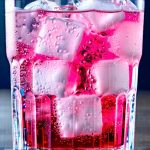Living with a sensitive bladder can significantly impact daily life, often requiring careful consideration of dietary choices. Many people find their symptoms – urgency, frequency, leakage, discomfort – are exacerbated by certain foods and drinks. While it’s crucial to remember that everyone’s triggers differ, acidity is a common culprit. This isn’t necessarily about eliminating all acidic foods; rather, it’s about understanding how high-acidity options can irritate the bladder lining in susceptible individuals and adopting snack habits that prioritize gentler alternatives. It’s important to work with healthcare professionals to identify personal sensitivities and create a dietary plan that works best for you, but focusing on lower acidity snacks is often a beneficial starting point.
This article will explore practical snacking strategies designed specifically for those managing bladder sensitivity. We’ll delve into why acidity matters, what foods tend to be problematic, and how to build satisfying snack options that support bladder health without feeling overly restrictive. The goal isn’t deprivation but mindful eating – choosing snacks that nourish your body and contribute to a more comfortable daily experience. We will also cover ways to identify your personal triggers beyond just acidity.
Understanding the Link Between Food & Bladder Health
The connection between diet and bladder health is often underestimated, yet for many individuals with sensitive bladders, it’s incredibly significant. The theory behind this link centers around how acidic foods can irritate the delicate lining of the bladder. When the bladder becomes inflamed or irritated, it sends signals to the brain that trigger urgency, frequency, and sometimes even pain. It’s not necessarily the acidity itself causing direct damage, but rather the resulting inflammation that leads to discomfort. Think of it like a sunburn – the sun doesn’t immediately destroy skin cells, but it causes irritation and inflammation leading to pain.
Foods high in acidity can include citrus fruits, tomatoes, vinegar-based dressings, carbonated beverages, spicy foods, and even caffeinated drinks. However, individual tolerance varies greatly; what bothers one person might not affect another. This is where personalized dietary exploration becomes essential. It’s also important to note that the way food is prepared can impact its acidity – for example, cooked tomatoes are generally less acidic than raw ones. Furthermore, combining certain foods can increase their overall acidity, so being mindful of pairings is helpful. To further explore ways to support kidney health through diet, consider reviewing daily eating habits for kidney stone prevention.
Beyond acidity, other factors can play a role. Foods containing artificial sweeteners, caffeine, alcohol, and even large amounts of potassium may also contribute to bladder irritation for some individuals. Keeping a food diary – carefully tracking what you eat and any associated symptoms – is an excellent way to pinpoint your specific triggers. This proactive approach empowers you to make informed choices about your diet and minimize discomfort.
Low-Acidity Snack Options & Swaps
Fortunately, many delicious and satisfying snacks are naturally low in acidity or can be easily adapted to reduce their irritant potential. Focusing on whole, unprocessed foods is generally a good starting point. Consider these options:
- Fruits: Pears, blueberries, melons (watermelon, cantaloupe), peaches, and apples (especially when cooked) are typically well-tolerated. Avoid or limit citrus fruits, cranberries, and pineapple.
- Vegetables: Cucumbers, carrots, green beans, potatoes (avoid spicy seasonings), and sweet potatoes are generally safe choices. Limit tomatoes and peppers.
- Grains & Starches: Oatmeal, rice cakes with a mild topping (like avocado or almond butter), plain crackers, and quinoa are good options. Avoid highly processed snacks made with vinegar or acidic preservatives.
- Proteins: Lean meats, poultry, fish, eggs, and tofu can be incorporated into snack-sized portions.
Making simple swaps can significantly reduce bladder irritation. For example, instead of a tomato-based salsa with your crackers, opt for hummus or guacamole. Replace citrus-infused water with plain filtered water or herbal tea. Instead of a spicy pepper jack cheese stick, choose mozzarella. Small changes can make a big difference in managing bladder sensitivity. If you’re looking for more ways to stay hydrated without irritating your bladder, check out tea-free hydration alternatives. Experimenting with different options and paying attention to how your body responds is key.
Identifying Your Personal Triggers
While general guidelines exist for low-acidity snacks, the most effective approach is identifying your specific triggers. A food diary is invaluable for this process. Here’s a step-by-step method:
- Keep a detailed record: For at least one to two weeks, meticulously log everything you eat and drink, including portion sizes and preparation methods.
- Track your symptoms: Note any bladder-related symptoms – urgency, frequency, leakage, pain – along with the time they occur. Be specific about the severity of the symptom (e.g., mild discomfort vs. intense pain).
- Look for patterns: After a week or two, analyze your diary to identify potential correlations between certain foods and your symptoms. Are there specific snacks that consistently trigger flares?
- Elimination Diet: Consider a temporary elimination diet under the guidance of a healthcare professional. This involves removing suspected triggers from your diet for a period, then reintroducing them one at a time while monitoring for symptom recurrence.
Remember to consult with a registered dietitian or healthcare provider who can help you interpret your food diary and develop a personalized dietary plan. They can also rule out other potential causes of bladder sensitivity.
Hydration & Snack Timing
Hydration plays a critical role in bladder health, but it’s not just about how much water you drink; it’s also about when. Sipping water throughout the day is preferable to gulping large amounts at once, as this can overwhelm your bladder. Aim for consistent hydration rather than infrequent bursts.
Snack timing can also impact bladder sensitivity. Avoid consuming large quantities of fluids or acidic snacks right before bedtime or long periods where access to a restroom might be limited. Spacing out your meals and snacks throughout the day helps prevent overloading your bladder. For more on establishing healthy hydration habits, explore optimal urinary balance through hydration.
Consider these points:
- Avoid late-night snacking: Eating close to bedtime can increase nighttime urination frequency.
- Smaller, more frequent snacks: This is generally better than large infrequent meals or snacks.
- Combine Snacks with Hydration: Be mindful of how much fluid you’re consuming alongside your snack. A low-acidity snack paired with a large glass of water might still cause issues.
Beyond Acidity: Other Considerations
While acidity often takes center stage, it’s crucial to remember that other dietary factors can also contribute to bladder sensitivity. Artificial sweeteners are known irritants for some individuals and should be minimized or avoided altogether. Caffeine and alcohol are diuretics, meaning they increase urine production, potentially exacerbating urgency and frequency. Spicy foods contain compounds that can irritate the bladder lining, similar to acidic foods.
Furthermore, food sensitivities and allergies can play a role. If you suspect you might have an undiagnosed allergy or sensitivity (e.g., dairy, gluten), consider getting tested by a healthcare professional. A properly diagnosed and managed allergy can significantly improve your overall health, including your bladder function. Finally, gut health is increasingly recognized as being linked to bladder health. A healthy gut microbiome can reduce inflammation throughout the body, potentially lessening bladder irritation. Incorporating probiotic-rich foods like yogurt (if tolerated) or kefir into your diet may be beneficial – again, consult with a healthcare professional for personalized advice. To understand how daily habits affect prostate and bladder function, consider reading daily nutrition habits for calm prostate function.
Disclaimer: This article provides general information and should not be considered medical advice. Always consult with a qualified healthcare professional before making any changes to your diet or treatment plan. If you’re experiencing ongoing bladder issues, it might be helpful to review comfort habits for mild urinary tract sensitivity.





















